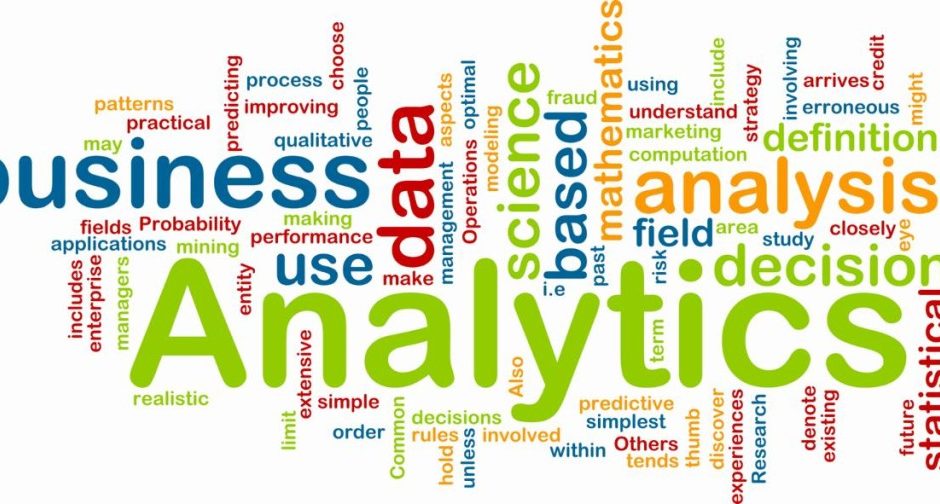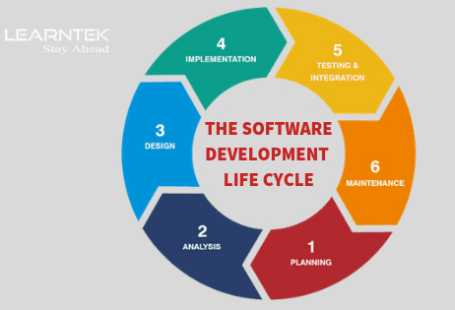It’s raining Data
An explosion of information is the defining feature of today’s information technology-driven world. An enormous amount of data is generated from multiple sources, such as business interactions, transactions, social networking and sensors. Often in unstructured forms, the data continues to grow exponentially. This massive amount of data, referred to as big data, becomes useless if it is not sorted, analyzed, and used in businesses for decision-making and predicting trends for business growth. ‘Big Data’, ‘Real-time Data’, ‘Smart Data’, and many other such related buzzwords no longer seem ‘extraterrestrial’ to the human race. Stephan Bake in his book, ‘The Numerati’, suggested that every movement of ours, ranging from normal activities like hitting a Like button on a Social Networking Site to strategic decisions like “buying a house”, generates terabytes of data. Despite many controversies related to privacy issues, the explosion of data and analysis is good news. But, how do we tap the opportunity to conduct better or more intelligent business is a more relevant question here. BA is a combination of mathematics and business knowledge. It does not just provide a specific solution in a single area but offers a complete range of solutions across the enterprise that involves continuous exploration of the past business performance so as to gain insights into areas unknown previously and drive decision-making and business planning.
Business Analytics in Supply Chain
Supply chain planning process success depends on how closely demands are forecasted, inventories are managed and logistics are planned. The supply chain is the heart of industry vertical and if managed efficiently drives positive business and enables sustainable advantage. Organizations are increasingly questioning their own ability to realize full potential from a huge amount of data they have within their supply chain. Huge data residing within the organization is a contemporary problem but at same it can provide a big opportunity to these organizations to find information they have been waiting to get their hands on for decision making and planning purposes. With the emergence of Big data, optimizing supply chain processes has become complicated than ever before. Being new concept organizations don’t have the same comfort level with unstructured data as they have with structured data. In this article, I have tried to identify what are the keys challenges organization are facing to utilize Big data for Supply Chain Planning. At same try to find out huge opportunities Big Data brings to organizations.
business analyticsAs supply chains become more tangled, with a greater number of far-flung suppliers, managers are faced with risks that can crop up in dozens of countries. Companies have long used complex data sets to plan to manufacture to meet customer demand. But firms are now looking to combine data from external sources to better predict future risks. The objective of this research paper is to understand the role of big data in the supply chain.
Challenges in Big Data Analytics for Supply Chain
Supply chain planning process success depends on how closely demands are forecasted, inventories are managed and logistics are planned. The supply chain is the heart of industry vertical and if managed efficiently drives positive business and enables sustainable advantage. With the emergence of Big data, optimizing supply chain processes has become complicated than ever before. Handling Big data challenges in supply chain and transforming them into opportunities is the key to corporate success. The key challenges are:
Volume – According to a McKinsey report, the number of RFID tags sold globally is projected to increase from 12 million in 2011 to 209 billion in 2021. Along with this, the phenomenal increase in the usage of temperature sensors, QR codes and GPS devices, the underlying supply chain data generated has multiplied manifold beyond our expectations. Data is flowing across multiple systems and sources and hence they are likely to be error-prone and incomplete. Handling such huge data volumes is a challenge.
Velocity – Business has become highly dynamic and volatile. The changes arising due to unexpected events must be handled in a timely manner in order to avoid losing out in business. Enterprises are finding it extremely difficult to cope up with this data velocity. Optimal decisions must be made quickly and shorter processing time is the key for successful operational execution which is lacking in traditional data management systems.
Variety – In the supply chain, data has emerged in different forms which don’t fit in traditional applications and models. Structured (transactional data), unstructured (social data), sensor data (temperature and RFID) along with new data types (video, voice and digital images) have created nightmares among enterprise to handle such diverse and heterogeneous data sets.
Existing research has shown that many companies are on the verge of making investments to develop a mature big data analytics capability. More than one-third of executives reported being engaged in serious conversations to implement analytics in the supply chain, and three out of 10 already have an initiative in place to implement analytics.
The innovation that currently exists in the form of new solutions and the leading practices for handling Big Data need a breakthrough change, as existing capabilities are not enough. The aim here is to explore how and why companies will make investments to develop a mature big data analytics capability. I have tried to explore how companies can create competitive advantage in their supply chain using big data analytics.
Supply Chain Management Training
The role of Big Data in Supply Chain
Top 5 sources for big data which can be used for Predictive analysis are:
- Product/Component Traceability Data
- Bar Code/RFID Data
- Customer Feedback on Social Media
- Data from Quality Audits
- Voice and Video Data
Top opportunities for Supply Chain from Big Data analytics:Looking to identify the most important source of Big Data from Supply Chain Management perspective, I found that “Product/Component Traceability” and “Barcode/RFID” are the major source of Big Data. While “Product/Component Traceability” helps an organization in identifying product/component back to the point of origin, Barcode/RFID provides visibility of product from replenishment perspective. Since these sources of data is the part of supply chain activity for quite some time now, that might be one of the reason for them being the most preferred. Customer feedback and review provided on various platforms from Facebook to Youtube to blogs could be next big source for identifying consumers’ perception about products as well as identifying the kind of shift in the trend. “Data from quality audits” may not be used in verification process but could be used for predictive audits to identify possible exception in future.
- Generating Competitive Intelligence
- Forecasting
- Improving Business Agility
- Spotting Customer Purchasing Trend
- Improving Operational Efficiency
- Real time monitoring
- Product Development
- Increasing Revenue
The Challenges aheadI looked at some of the areas where Big Data and Predictive Analytics can align with each other in creating new opportunities for the Supply Chain management. I analyzed the areas where Big Data and Predictive Analytics are playing a major role already by other companies. Improving Forecasting and at the same time provide much better Business Intelligence by factoring in both unstructured as well as structured data are the reasons why companies are adopting the analytics. Other opportunities lie in providing business agility or spotting demand shifts with the help of leveraging data from multiple sources. Predictive Analytics is already playing a major role in Supply and Operation planning & Optimization. Big Data would strengthen predictive analytics tools by factoring in the data from other platforms on real time basis.
Main challenges in adopting analytics in Supply Chain:
- Complexity (Challenges with combining multiple data sources)
- Getting the right tool or expertise
- Analysis Process
- Cost
- Security
Since Big Data is still in its nascent stage, getting the right adoption strategy can be daunting task. Most of the data being generated nowadays are in unstructured data format. However, the industry has been comfortable working with structured data till now. Leveraging unstructured data in a structured format is the challenge ahead from supply chain perspective.In order to find various challenges being faced by the companies, it was found that the main hurdle in utilizing vast amount of data generated throughout supply chain is to bring data from various sources some of which are unstructured obtained from platforms like Facebook or Youtube. Next hurdle is in getting the right tool to capture and analyze data.
To add to this cost of data and the Data Security are the important factor for the vast amount of data. Maintaining such huge amount of data for business intelligence perspective can be a big challenge. Security of the data is important as cyber criminals would love to target these.
Evaluation of the technology before using it:
Main evaluation criteria for adopting analytics:
- Benefits for the Company
- Data Integration
- Interoperability
- Cost Effectiveness
- Technology Performance (Speed)
The dilemma the industry is facing today with respect to Big Data and Predictive Analytics is to find ways to evaluate them. Since both are relatively new technologies, we don’t have well-established evaluation criteria. Primary organizations are looking for how well these tools integrate with their current system. At same time it is important to see that the new system leverages both existing data and new dataset in an integrated manner so that organization don’t have to go one data set in order to utilize another one.
Organization needs to study Pros and Cons in order to get the holistic picture of kind of business benefits these tools bring on to the table. Proponents pitching for the adoption of Big Data and Predictive Analytics tools need to provide justification on the cost versus performance perspective.
Benefits of Analytics in Supply Chain
According International Data Corporation (IDC) has predicted that Big data market will grow from $3.2 billion in 2010 to $16.9 billion by 2015 at a compound annual growth rate of 40%. As company supply chains become more complex, with a number of suppliers, supply chain managers are faced with risks that can crop up in dozens of countries. Companies have long used complex data sets to plan to manufacture to meet customer demand. But firms are now looking to combine data from external sources to better predict future risks. Let’s look at some of the benefits of using analytics:
Important benefits of using business analytics
- Visibility across the supply chain
- Optimizing sourcing and logistic decisions
- Re-Designing Demand and Inventory management
- Redesigning Flexibility
- Approach to handling cost pressure
Poor forecast accuracy continues to trouble organizations. Customized supply chain analytics adjusted to each supply chain process and advanced forecasting engine allow organizations to handle intermitted demand patterns and incorporate real-time market intelligence in the forecasting process. Increased visibility as discussed earlier will make companies more flexible in taking decisions and at the right time. Analytics provide opportunities to assess potential supplier risk through financial analysis and their capability constraints. Analytics can also be used to perform product cost sensitivity analysis. All these will help in easing of cost pressures.The success of global business model has created increased number and types of suppliers, manufacturers, and distribution partners. For the success of any global supply chain, visibility is the key. Big data analysis can help organizations judiciously and cleverly invest in visibility which will lead to making decisions to increase supply chain responsiveness, optimize cost, and minimize customer impact. Next important area where analytics can help is in making optimized and efficient sourcing and logistics decisions. Analytics tool will help in getting exact cost of each component of the products, rather than just price. Complete view of supply chain cost of any given material is essential for making optimal purchase decisions on a total cost basis.
Conclusion
We are moving in an era where both scope and scale of supply chain operations will expand. This era will be of Big Data. Various forms of unstructured data right from social media to real-time geo-location data will provide a great opportunity to better Supply chain Management. However, there is also a caveat that organizations should be willing to embrace Big Data and overcome the hurdles in the path.






